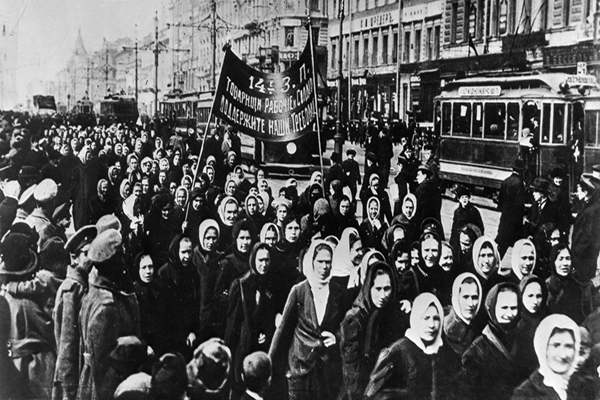Keywords: International Women’s Day, working women, class struggle, labour rights, Clara Zetkin.
Why do we celebrate International women’s day on 8th march? It was a question that our professor asked us in political ecology class. Some of us guessed it’s because of the Russian revolution and participation of women in it that we celebrate women’s day on 8th march. Professor told how she asked this every year around this week and she expects students to know but less and less people know about it every year. Professor told us about the history of women’s day.
Origins of International women’s day
What we call International women’s day originated from a global movement which began with an act of defiance and courage in the streets of New York. It was on 8th March 1908 that 1500 women marched in the streets of New York demanding improved working conditions, better pay, shorter working hours, and voting rights. It was the largest public women’s rights protest of the time, organized by garment workers. Later, the Socialist Party of America declared February 28, 1909, as National Women’s Day, marking the start of the First Wave of Feminism. The slogan “Bread and Roses” emerged, with bread symbolizing economic security and roses for better living standards.
Half a century ago on March 8, 1857, to this public march by women in the Streets of New York, female garment workers staged a protest against inhumane working conditions and low wages in factories. However, the police attacked the protesters and dispersed them, but the movement continued and led to the creation of the first women’s labor union.
In May 1908, the Socialist Party of America declared that the last Sunday in February would be National Women’s Day. The first National Women’s Day was celebrated on Feb. 28, 1909, in the United States.
First International Women’s Day
Clara Zetkin, a German socialist and women’s rights activist, proposed the idea of an International Women’s Day in the International Conference of Socialist Women held at Copenhagen, Denmark in 1911. She was a founding member of the Socialist Women’s International and played a key role in organizing the first International Women’s Day. Zetkin was tirelessly advocating for women’s rights, traveling extensively throughout Europe and the United States to speak at conferences and rallies.
Just a few months after the conference, on March 25, 1911, a devastating fire broke out at the Triangle Shirtwaist Factory in New York City, killing 146 workers, most of whom were women. This tragedy highlighted the appalling working conditions and lack of labor protections faced by women, further galvanizing the movement.
In the years that followed, International Women’s Day gained momentum, with women from diverse backgrounds and countries came together to demand their rights. In 1913, women in Russia celebrated their first International Women’s Day., By 1914, the day was being marked in several European countries.
By the 1970s, International Women’s Day had gained global recognition, with the United Nations declaring 1975 as the International Women’s Year. This marked a significant shift in the celebration, as it transitioned from a protest to a day of recognition and celebration.
Repoliticising International women’s day
Despite this day becoming an opportunity to acknowledge the progress made towards gender equality and to push for further change. It seems that commemoration of International Women’s Day has been reduced to celebration of gender identity and efforts of women in keeping this society functioning. It isolates the issues of gender from other forms of oppression like worker’s Issues which were very much in the initial conception of the day. Further intersectional marginalization of women across class and caste is often ignored when it comes to appreciation and commemoration of women. Ideas of justice and equality seem to be pushed on the back burner for this appropriation of gender-class struggle. Today, there is a need for action in terms of ensuring safety for women in workspaces and public space in general. Equal participation of men in domestic work over mere appreciation of women for her work in the household is a demand that we must raise. The struggle that women lead today is not merely about embracing their identity or womanhood but it has roots in the struggle against oppressive structures of patriarchy, class inequality and other intersectional forms of oppression like caste and race. However, the selective identitarian commemoration and celebration of struggle against inequality, inaccessibility to spaces and dignity misrepresents and delegitimizes the global solidarities that feminist movements have received.
Finally, I would conclude my thoughts by reiterating what Clara Zetkin had once said, “The struggle for women’s rights is not a separate, isolated struggle, but an integral part of the struggle for the emancipation of the working class.”
Acknowledgement
My sincere gratitude to professor Sudha Vasan who made me informed and aware about this fading history of class and labour struggle in commemoration of International Women’s day.
References
Thakur, Anjali. “International Women’s Day 2025: Here’s Why We Observe Women’s Day On March 8”. NDTV, March 5, 2025.
Library of Congress (.gov). “The sun (New York [N.Y.]), March 8, 1908” https://www.loc.gov/item/sn83030272/1908-03-08/ed-1/

- –Jatin Mathur is a Social Anthropologist and Sociologist. He is a Sociology Master’s student at Delhi School of Economics, Delhi University.


